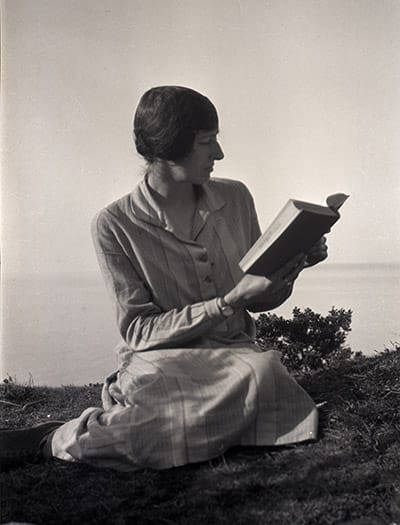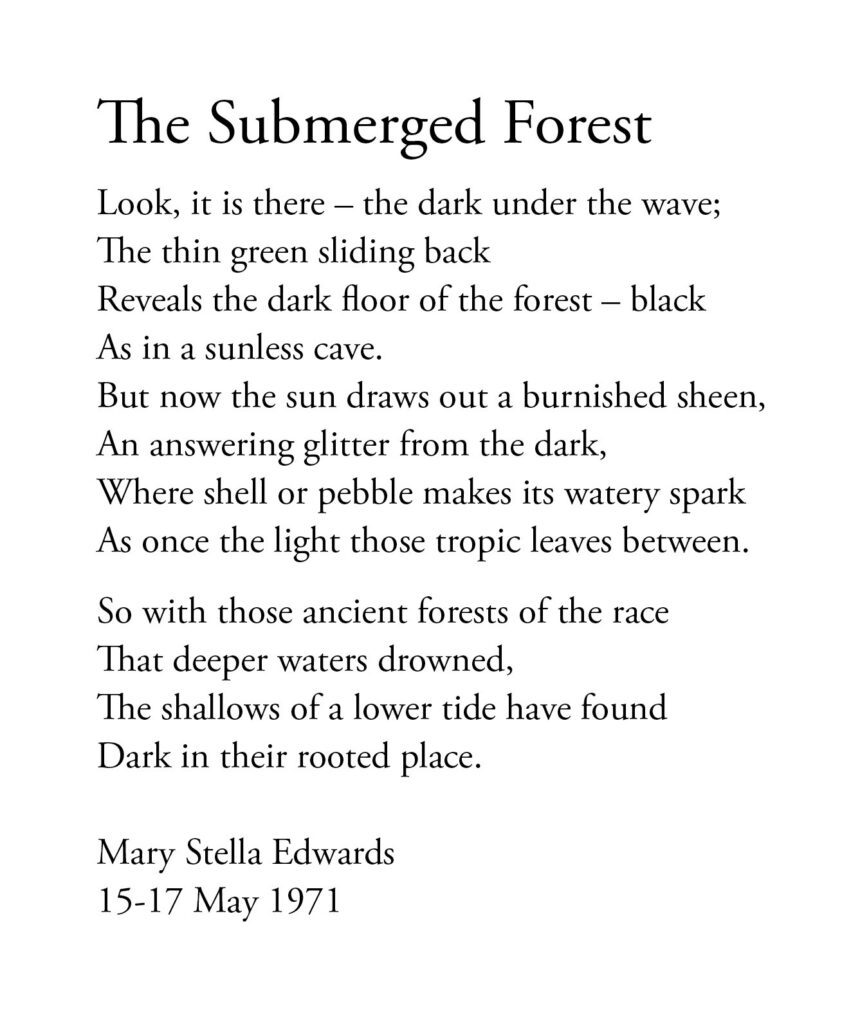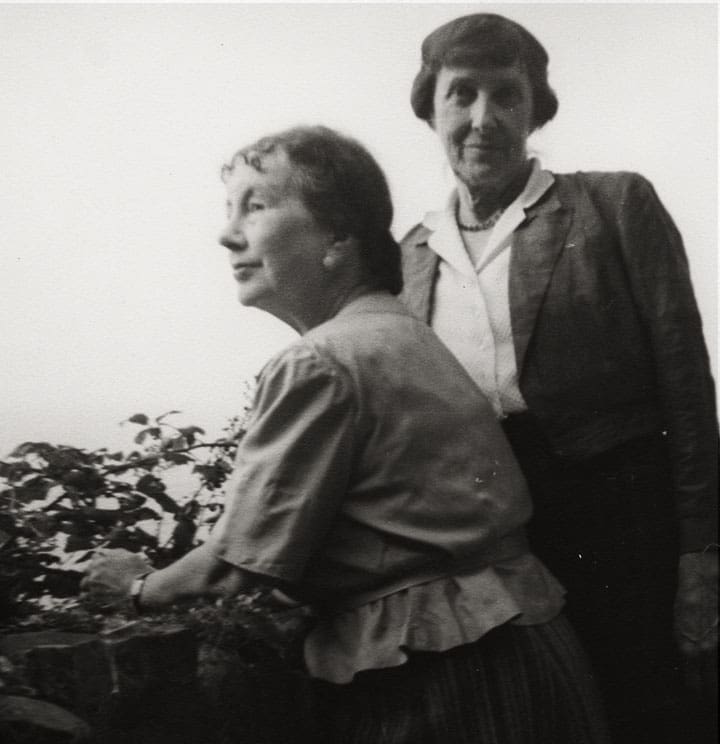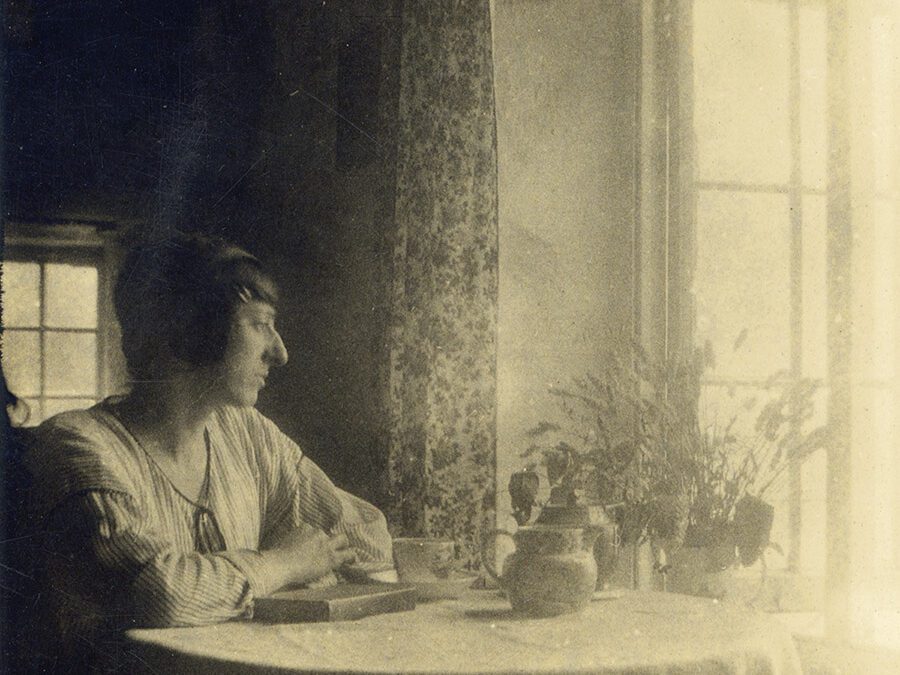Judith Ackland remains a rather shadowy figure in the archive. She wrote just one journal (to Mary Stella’s 20+) and she seems to have left much of the business correspondence of their professional lives to Edwards. However, the relationship between Judith and Mary Stella was crucially important to Edwards’ work. So much so, that it’s possible to split her work into three stages reflecting their shared history:
- Before Mary Stella and Judith met… or rather before they first went to The Cabin together in 1924
- Their life together 1924-1971: the “long loving years of sweet content” (from Rooms)
- After Judith’s death in June 1971

As Edwards put it in a letter, written at The Cabin in August 1975 during her last visit there: “It is not exactly a case of correlating my work with events in my life – the first half of A Truce with Time, conveyed by its title & the whole of Before and After (‘and pine for what is not’) simply are my life over 52 years & since…”
Inner and outer worlds
What of the second half of A Truce with Time then? Edwards herself split her work into poems relating to her and Judith’s “inner world”, and poems relating to their “outer world”. The poems in the second half of A Truce with Time relate to their outer world. The poems from A Further Harvest – many written while Judith was still alive – also fall into this “outer world” category.
Judith herself seems to have believed that taking Mary Stella Edwards to Bucks Mills would inspire her to write poetry. She was right, it did. But it did more than that – as Edwards’ work matured rapidly after the mid-1920s. Again, Edwards’ own view is slightly different. As she wrote in a letter to Ackland in August 1925: “I find I’ve written at the rate of a poem per month since we were at Bucks – which is exactly double my output for each year of the three years before that. You said that you had a hope that Bucks – would make me write – but it is you and the place together.”
Practical help
Judith’s role was frequently practical. She was always the first person to read any new poems – one of the many things that Mary Stella missed after Judith died. This makes the last poem, ‘The Submerged Forest’, in the Before section of her third collection Before and After so poignant, as it was the: “last new one she read, written during that last brief so lovely, then tragic, time” (letter to John Wheelock, 1973).

Obviously, the conversations that Mary Stella and Judith had after these poetry readings are not documented in the archive. But letters and journal entries sometimes give me the occasional clue. For example, in a letter to Gilbert Murray in February 1945, Mary Stella writes that Judith suggested exchanging the word “how” for “then” in her poem ‘Presage’. She writes that this change “fulfils what I want in meaning & sound”. Edwards’ poems often remained untitled for months, and it seems that Judith may have helped here too. For example, Mary Stella writes in her Journal in May 1927 that the title of her ‘A Truce with Time’ poem was chosen by Judith.
Overcoming writer’s block
Sometimes Mary Stella would not be able to write poetry for months at a time. Judith had an ingenious solution for this problem too. Edwards writes: “In the darling past, when I had a dry patch, Judith used to close her eyes & bring down the point of a pencil on some word in an open book, sometimes 3 words, all of which must appear, but in different lines; then we would both write something – she did some delicious light verse on a number of occasions. In A Truce with Time, ‘Pilgrimage’, ‘Palimpsest’ & then ‘Viewpoint’ came out of one of these sessions. I was delighted to find that A.E. Housman used to do this with his brother.” (Letter to Raymond Lister, July 1976)
Judith writes to Robert Graves
So far, almost everything I’ve discovered has been written by Mary Stella Edwards – so I was delighted to discover the following letter from Judith Ackland. She wrote the letter a year before A Truce with Time was accepted by Golden Head Press, and it gives a great insight into her own views on Mary Stella’s poetry, and her frustration that it wasn’t better known.
16 January 1966
Dear Sir,
Listening to your reading and commentary (on Wednesday 12th January) – held and absorbed by your poems and all you were saying – there came the remark “No one writes ‘beautiful’ poems now”. I think this is wrong. Very few people dare to care about it if written today – so publishers will not risk it against the tides of fashion. To illustrate this I enclose some representative poems by M.S. Edwards which although when occasionally published in periodicals, have been overlooked by anthology compilers, and a collection fails to find a publisher.
Couldn’t you, from your assured and unassailable position, do or say something that might rouse the blinkered pundits to the worth of beautiful poetry in its own right – even though written in these years of doubtful grace? It may be a rare occurrence, but rarity is not a crime. Should it not rather be cherished than condemned and killed?
I don’t apologize for writing to you. I do it in faith and with great respect.
Yours faithfully,
Judith Ackland
I have not (yet) discovered a response from Robert Graves in the archive.
Previous post: Writing poetry in the true way
Next post: Mary Stella Edwards’ school days

